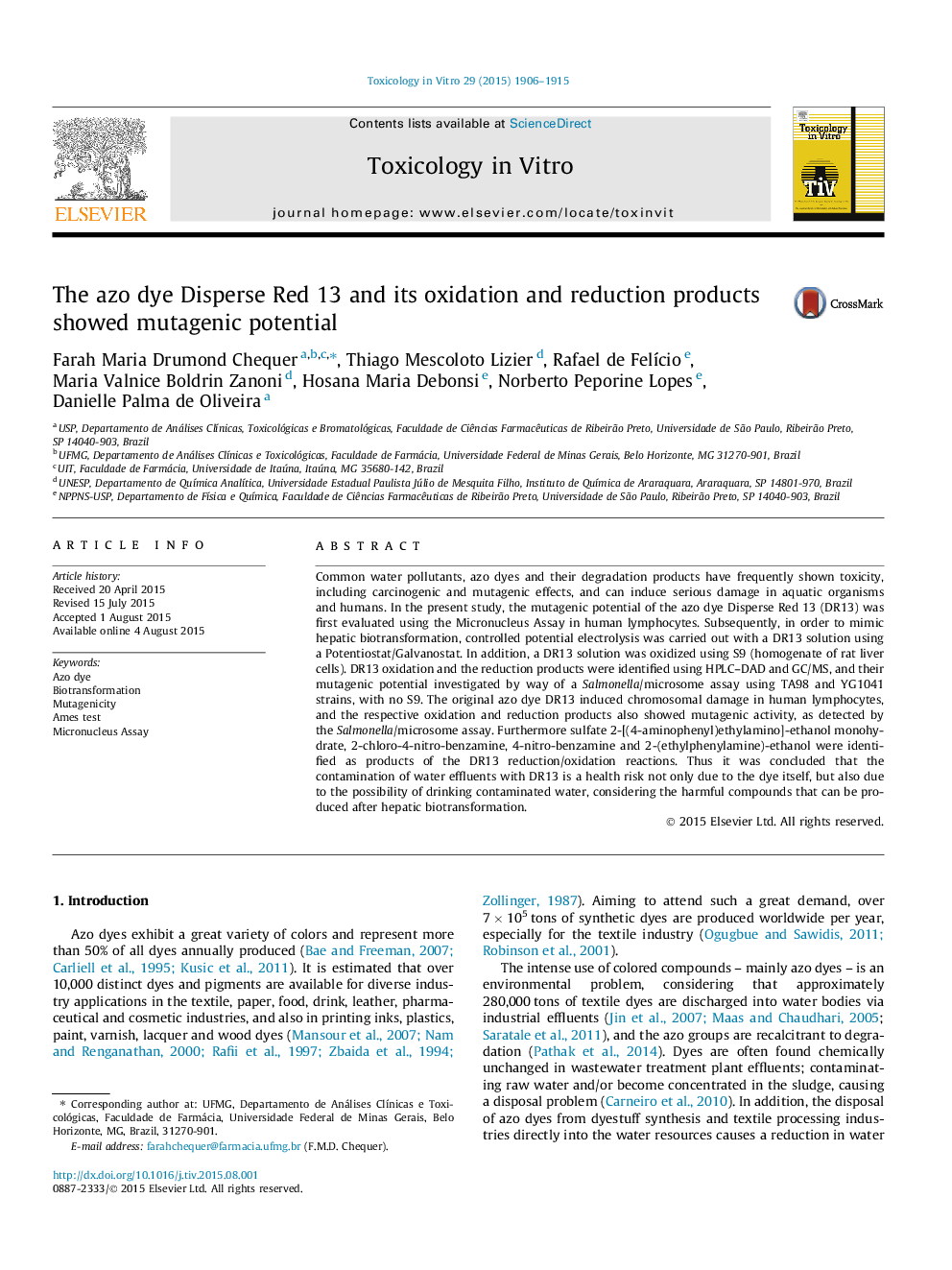| کد مقاله | کد نشریه | سال انتشار | مقاله انگلیسی | نسخه تمام متن |
|---|---|---|---|---|
| 5861493 | 1133760 | 2015 | 10 صفحه PDF | دانلود رایگان |

- Azo dye Disperse Red 13 (DR13) induced chromosomal damage in human lymphocytes.
- Products of the DR13 reduction/oxidation reactions showed mutagenic activity.
- DR 13 dye and its degradation products may be harmful to human health and environment.
Common water pollutants, azo dyes and their degradation products have frequently shown toxicity, including carcinogenic and mutagenic effects, and can induce serious damage in aquatic organisms and humans. In the present study, the mutagenic potential of the azo dye Disperse Red 13 (DR13) was first evaluated using the Micronucleus Assay in human lymphocytes. Subsequently, in order to mimic hepatic biotransformation, controlled potential electrolysis was carried out with a DR13 solution using a Potentiostat/Galvanostat. In addition, a DR13 solution was oxidized using S9 (homogenate of rat liver cells). DR13 oxidation and the reduction products were identified using HPLC-DAD and GC/MS, and their mutagenic potential investigated by way of a Salmonella/microsome assay using TA98 and YG1041 strains, with no S9. The original azo dye DR13 induced chromosomal damage in human lymphocytes, and the respective oxidation and reduction products also showed mutagenic activity, as detected by the Salmonella/microsome assay. Furthermore sulfate 2-[(4-aminophenyl)ethylamino]-ethanol monohydrate, 2-chloro-4-nitro-benzamine, 4-nitro-benzamine and 2-(ethylphenylamine)-ethanol were identified as products of the DR13 reduction/oxidation reactions. Thus it was concluded that the contamination of water effluents with DR13 is a health risk not only due to the dye itself, but also due to the possibility of drinking contaminated water, considering the harmful compounds that can be produced after hepatic biotransformation.
Journal: Toxicology in Vitro - Volume 29, Issue 7, October 2015, Pages 1906-1915